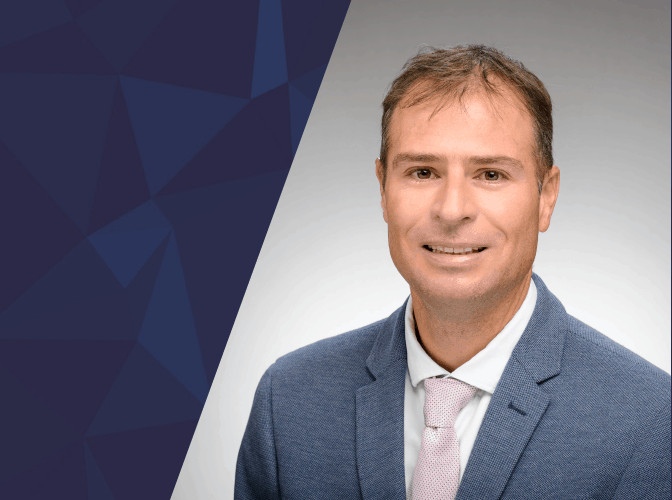
A solid foundation: Alumni reflections
As we celebrate Hispanic Heritage Month, alum Luis B. Fargier-Gabaldón (PhD Civil Engineering, 2005) reflects on his time in the department and how it impacted his career.

As we celebrate Hispanic Heritage Month, alum Luis B. Fargier-Gabaldón (PhD Civil Engineering, 2005) reflects on his time in the department and how it impacted his career.
By Luis B. Fargier-Gabaldón
Born and raised in Venezuela, I knew little about the educational system overseas when I was a college senior in the fall of the year 2000. My goal was to find the best place to learn how to design structures and I was fortunate to get advice from a University of Michigan alumnus who pointed me in the right direction. I bought two books, one to study for the Test of English as a Foreign Language (TOEFL) exam and the other to prepare for the GRE. The admission rate was low so good scores were needed. Aware of the risk of rejection, I applied to one program: MS in Civil Engineering at the University of Michigan with a concentration in structures.

I still remember how impressed I was by the facilities and unique atmosphere during my first days on campus, and even today I am impressed each time I visit Ann Arbor. The fall semester of 2001 started, and I was learning how to design tall buildings and long-span bridges. A dream come true.
I must admit, however, that I found the first semester challenging. My English was poor, so I was required to take the English as a Second Language class, in addition to the coursework of the program: Earthquake Engineering, Concrete Members and Prestressed Concrete taught by renowned faculty. I got into the rhythm of grad school as the term progressed and I took a part-time job making copies at the department’s main office which provided some extra money.
Time passed by quickly the following five years. From homework to midterms and then to finals, from the MS to the PhD program, building and testing models in the structures laboratory, traveling to conferences, expanding my network, working on papers, writing my dissertation, having good time with friends, but above all, learning a lot. Life as a student was perfect.
After finishing my PhD in 2005 I returned to Venezuela, my native country, and started working as an adjunct professor and as a junior bridge engineer. I felt that the experience gathered while working in the structures laboratory testing full-scale building components was a major asset, particularly when the retrofitting of structures was at stake, while the coursework I took in graduate school was instrumental to create new courses carefully designed to tackle the needs of my native country. I realized that the years at the University of Michigan had created unparalleled discipline and dedication that allowed me to keep focused and work 70+ hours/week. Those years were crucial as I had the opportunity to participate in the design and construction of several bridges and buildings with the help of experienced colleagues.
The education I had at the University of Michigan was rich, rigorous and provided a base to solve real engineering problems. The experience component has been essential in my career, too. But in retrospect I can affirm that it has been built upon solid foundations crafted in grad school.
One of the most remarkable aspects of being a student at the University of Michigan was the people that I had the opportunity to meet. The brightest minds from different countries, cultures and backgrounds filled classrooms, laboratories and cubicles. My network of friends grew quickly including students, staff and professors. Ties with them get stronger with time.
A few years after returning to Venezuela I decided to pursue a second MS with an emphasis in geotechnical engineering. After completing the program, I founded a design firm specialized in bridge engineering. Since then, I have had the opportunity to design more than one million square feet of bridge superstructures, including long-span prestressed segmental cantilever bridges, arch bridges, launched steel bridges, steel and reinforced concrete buildings, and to participate in the retrofit of famous bridges including the first multi-span cabled-stayed bridge constructed, located over Lake Maracaibo in Venezuela.
At that same time, I devoted more time to my involvement in professional societies, mainly within the American Concrete Institute (ACI), where the University of Michigan has had a strong presence over the past 40 years. I am a member of subcommittees that write the ACI 318 Code “Building Code Requirements for Structural Concrete and Commentary.” This document is the standard used in the United States and several countries to design concrete buildings. I also wrote a book in Spanish on Reinforced Concrete which is widely used in Latin America and participated in the reconnaissance mission after the 2010 Chilean earthquake. It’s been a fascinating journey that started 20 years ago as a graduate student at Michigan.
The University of Michigan’s highly respected program in Civil and Environmental Engineering is well known globally and has opened many doors for me in academia. In Venezuela, I taught for 12 years as an Adjunct Professor at the Universidad de los Andes and I am invited frequently to give talks in Bolivia and Colombia. In the United States, I have been a Visiting Professor at the University of Wisconsin-Madison and at Purdue University where I was appointed as the Edward Curtis Professor in Civil Engineering. Recently, I was appointed as the Massman-Beavers Associate Professor of the Practice of Heavy Civil Engineering at the University of Notre Dame, where I teach practice-oriented courses and conduct applied research to design safer and more durable bridges.
I have been privileged to attend the University of Michigan. It has been a solid foundation throughout my career. Go Blue!